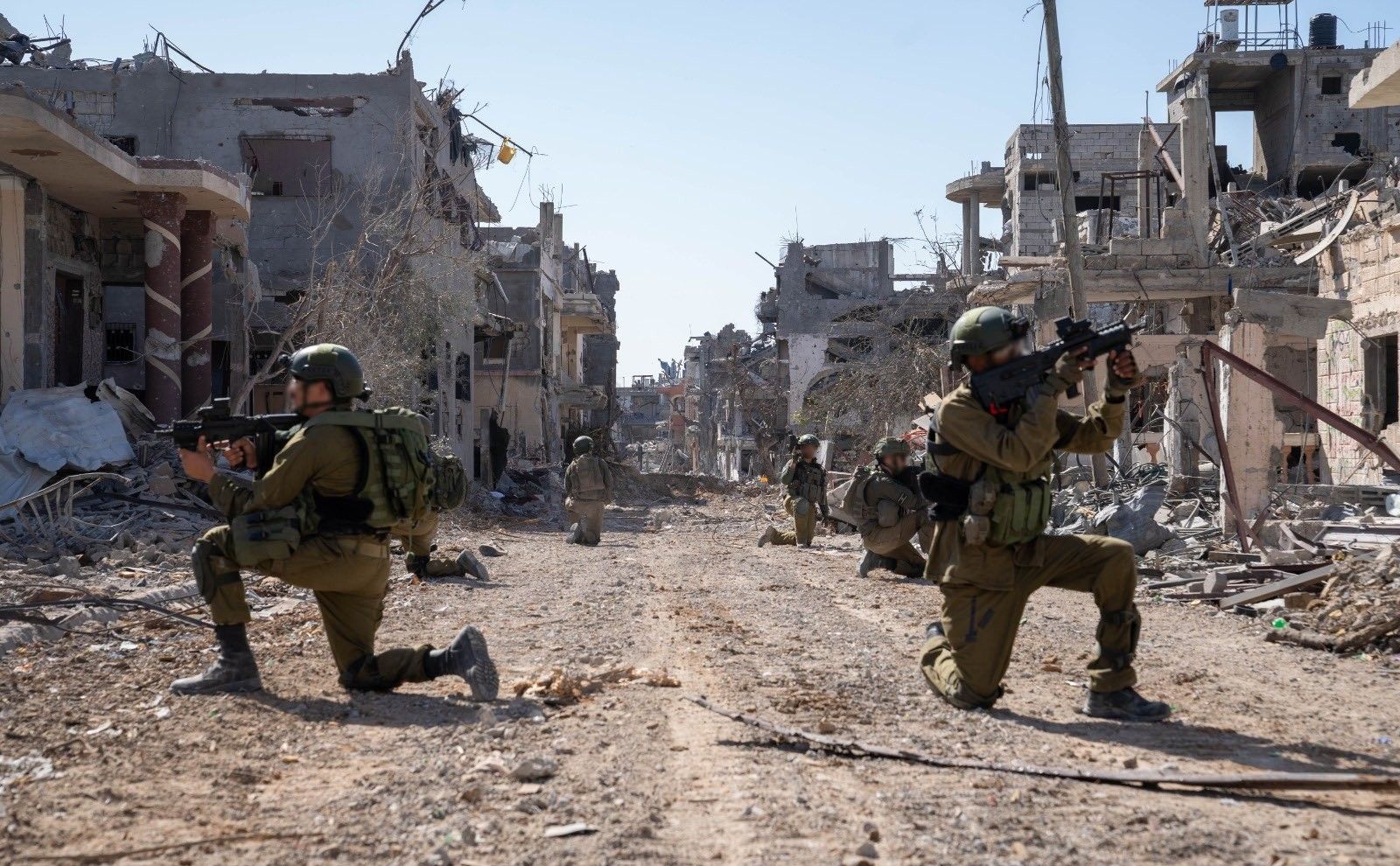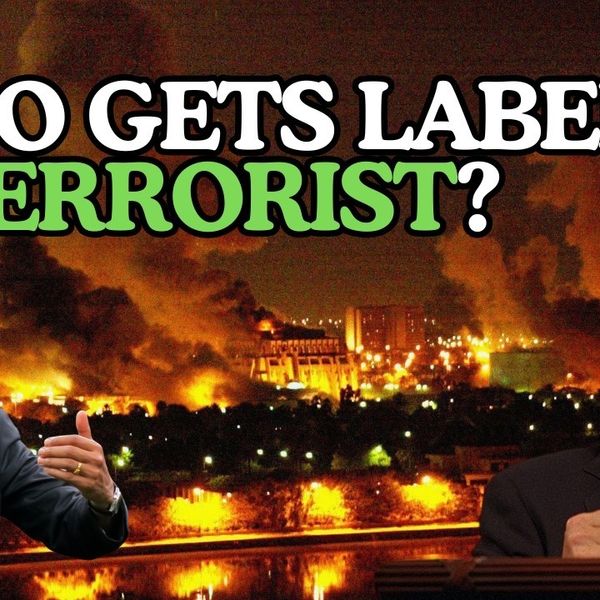In response to Hamas’s brutal attack on Israel on October 7, the IDF invaded Gaza with a stated purpose of destroying the terror group. As such, the IDF is fighting what many have come to call a “war of counter-insurgency.”
Hamas has no “army” in any well accepted sense of the word. Rather, Hamas’s military arm is reasonably well-organized (and well-funded) confederation of guerrilla fighters. The IDF’s aim is to kill or otherwise incapacitate Hamas’s fighters and, insofar as possible, leave civilians alone.
But the IDF is not really fighting a war of counter-insurgency in Gaza. What it is fighting is best understood as a “war of occupation.” The Israelis left Gaza in 2005, and now they are back as de facto occupiers. This characterization isn’t to imply that the IDF will stay in Gaza in the long term. They may, they may not. It is rather an apt description of the challenging and dangerous military situation the IDF faces as it stands today.
What is the difference between a war of counter-insurgency and a war of occupation, and is it useful for understanding the war in Gaza?
In a war of counter-insurgency — at least as understood by politicians and theorists insisting that such a war is being fought — there are insurgents and civilians. The former are politically motivated, well-armed, and deadly. The civilians are simply “in the way.” They are politically neutral if not exactly supportive of the troops sent to “help” them. In the understanding of the counter-insurgency experts, most civilians just want the war to end so they can get on with their lives. The West German operations against the Red Army Faction provide an example of a war of counter-insurgency, as does, perhaps, the American effort against al-Qaida and the Islamic State.
In these cases, the insurgents were difficult to identify, but they did not generally enjoy the support of local population. This situation made military operations easier.
In a war of occupation, however, there are insurgents and hostile civilians. The former are, as in a war of counter-insurgency, armed and deadly. But the latter — and this is the crucial difference — are decidedly unfriendly to the occupying forces. Whatever their political leanings, the occupied believe that the foreign troop should go home. The civilians may not be active combatants, but they are likely to give aid to the insurgents simply on nationalistic grounds.
Thus understood, wars of occupation — often propagandistically called “wars of counter-insurgency” by occupying powers — have been common and deadly in modern times. One need only recall the British in Malaysia, the Americans in Vietnam, the French in Vietnam and Algeria, the Soviets in Afghanistan, and the Americans in Iraq and Afghanistan. In these cases, the insurgents were difficult to identify, but — and very significantly — much of the local population was decidedly hostile to occupying troops. This situation made military operations more difficult.
The example of a war of occupation I know best is that of the Vietnam war, and it illustrates how difficult it is to fight — let alone win — such a war. From the beginning, the U.S. said it was fighting a war of counter-insurgency in South Vietnam, a “different kind of war” the Pentagon and successive presidential administrations called it. The U.S. did not invade North Vietnam and it said it did not invade the South Vietnam. But invade is what it did. The U.S. sent 2.6 million military personnel to South Vietnam over the course of the war; at the high point of operations, it had over half a million men there. The U.S., essentially, occupied much of South Vietnam.
One of the places the U.S. occupied was Quang Ngai province on the northeast coast of South Vietnam. This, tellingly, is where the My Lai massacre occurred. U.S. ground troops in Quang Ngai hunted — and sometimes engaged — the Viet Cong, the “insurgents” of counter-insurgency theory. But they also encountered a population of South Vietnamese that was profoundly hostile to the Americans. The locals sniped at them, laid boobytraps and mines, aided the Viet Cong, and were generally involved in anti-American resistance.
U.S. troops recognized the antagonism of the Vietnamese population in Quang Ngai, a population they were nominally defending. In the wake of the My Lai Massacre, the U.S. Army conducted an investigation to find out what had gone wrong with their counter-insurgency strategy. The investigators asked the perpetrators why they had killed civilians. The soldiers often responded by saying they did not know they were “civilians.” The Vietnamese in Quang Ngai were, so the American troops claimed, all “VC sympathizers” and therefore dangerous. It’s important to recognize that the American soldiers were not saying that it was (as the common trope goes) “difficult to tell combatants from civilians.” They were saying that all the civilians were potentially threatening.
In Gaza, the IDF finds itself in a situation like that of the American army in Quang Ngai province. The Israelis are there nominally on a counter-insurgency mission. But in fact, they have occupied Gaza. Hamas does not want them there, but neither do most Gazans who are suffering under the IDF onslaught. Is it too much to say that most Gazans hate the IDF? Perhaps not. Critics might well say that many Gazans hated the IDF before the Israeli invasion. Again, perhaps true. But the invasion and occupation certainly have not improved the situation. In a recent poll conducted by the Palestinian Center for Policy Survey and Research, 57% of Gazans said Hamas was “correct” to attack Israel on October 7. Nearly all of those surveyed — 97% — said the Israelis were committing “war crimes” in Gaza.
This fact — a nearly uniformly hostile population — makes IDF military operations very difficult. The Israeli forces must fight Hamas, but they also must worry about hostile Palestinian civilians living under what the Palestinians see as IDF occupation. The dangers of conducting military operations in such a context are numerous, but the most significant — at least from the point of protecting civilians — is that the IDF will come to view the hostile residents of Gaza as “Hamas sympathizers” with tragic results.
The perils of inherent in a war of occupation were vividly illustrated on December 15 when the IDF killed three Israeli hostages in Gaza City. According to the IDF, the Israeli troops “mistakenly identified three Israeli hostages as a threat” even though they were unarmed and were waving a white flag. The IDF went on to explain that the killings violated the Israeli rules of engagement. Of course they did, but that’s to miss the point: from the perspective of the Israeli ground troops, all Gazans, no matter how innocent they appear, are perceived as a threat. This is particularly true of military-aged males, and all three of the murdered Israeli hostages were military-aged males.
In modern times, wars of occupation have not ended well for the occupied or the occupiers. Typically, hostile civilians — what the occupying power sees as “sympathizers” — suffer tremendously and the occupying power leaves defeated. Such was the case in Algeria, Vietnam (twice), and Afghanistan (twice). The IDF knows this fact well, having fought, and lost, a war of occupation in southern Lebanon intermittently from 1982 to 2000. It remains to be seen if the Israelis have truly learned this lesson.
- After a spate of warnings, Israel went down the 9/11 path anyway | Responsible Statecraft ›
- What the French evisceration of Algeria has to do with Gaza today | Responsible Statecraft ›
- Don't take your eyes off Gaza | Responsible Statecraft ›
- This new Hamas chief signals more war, not less for Gaza | Responsible Statecraft ›















